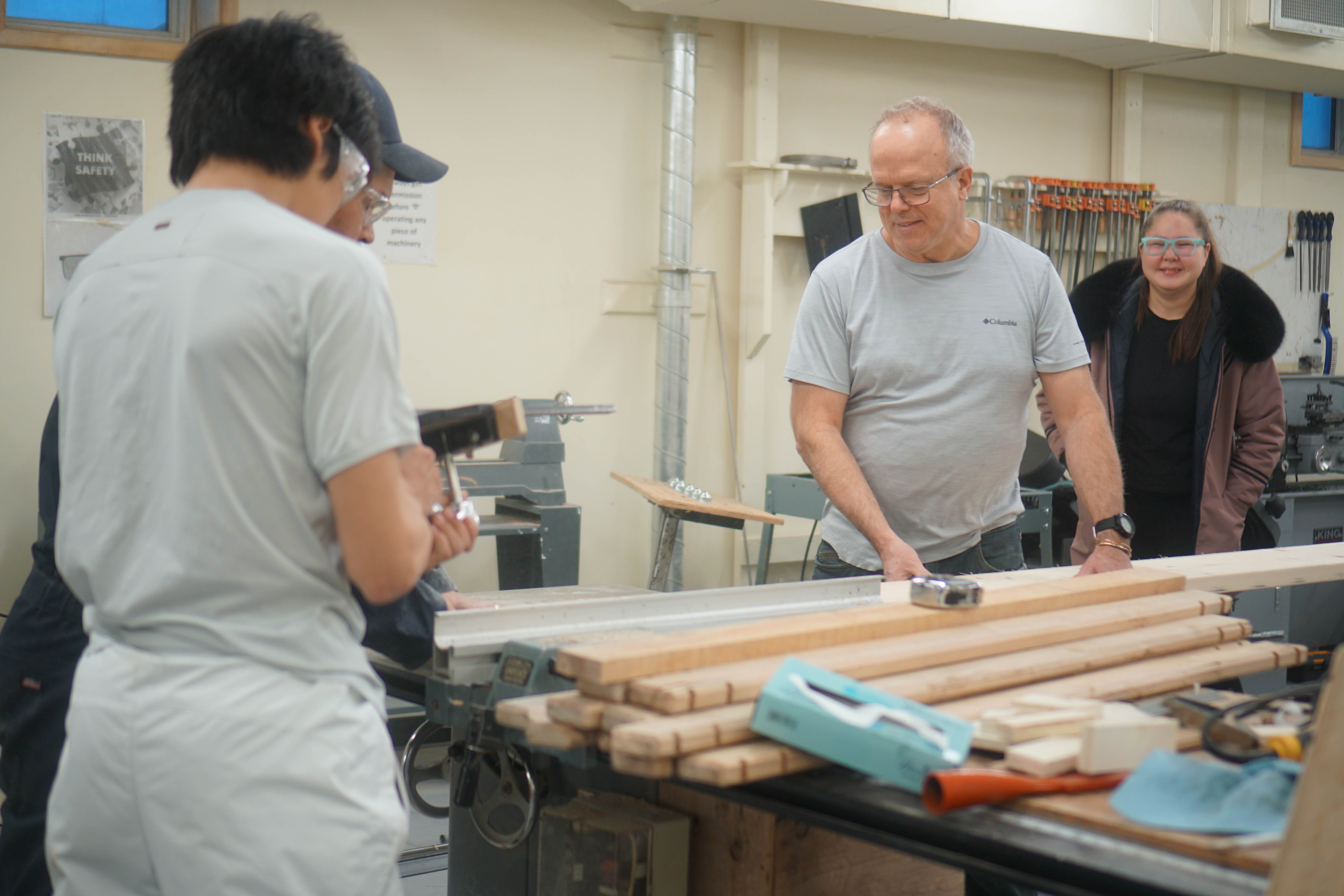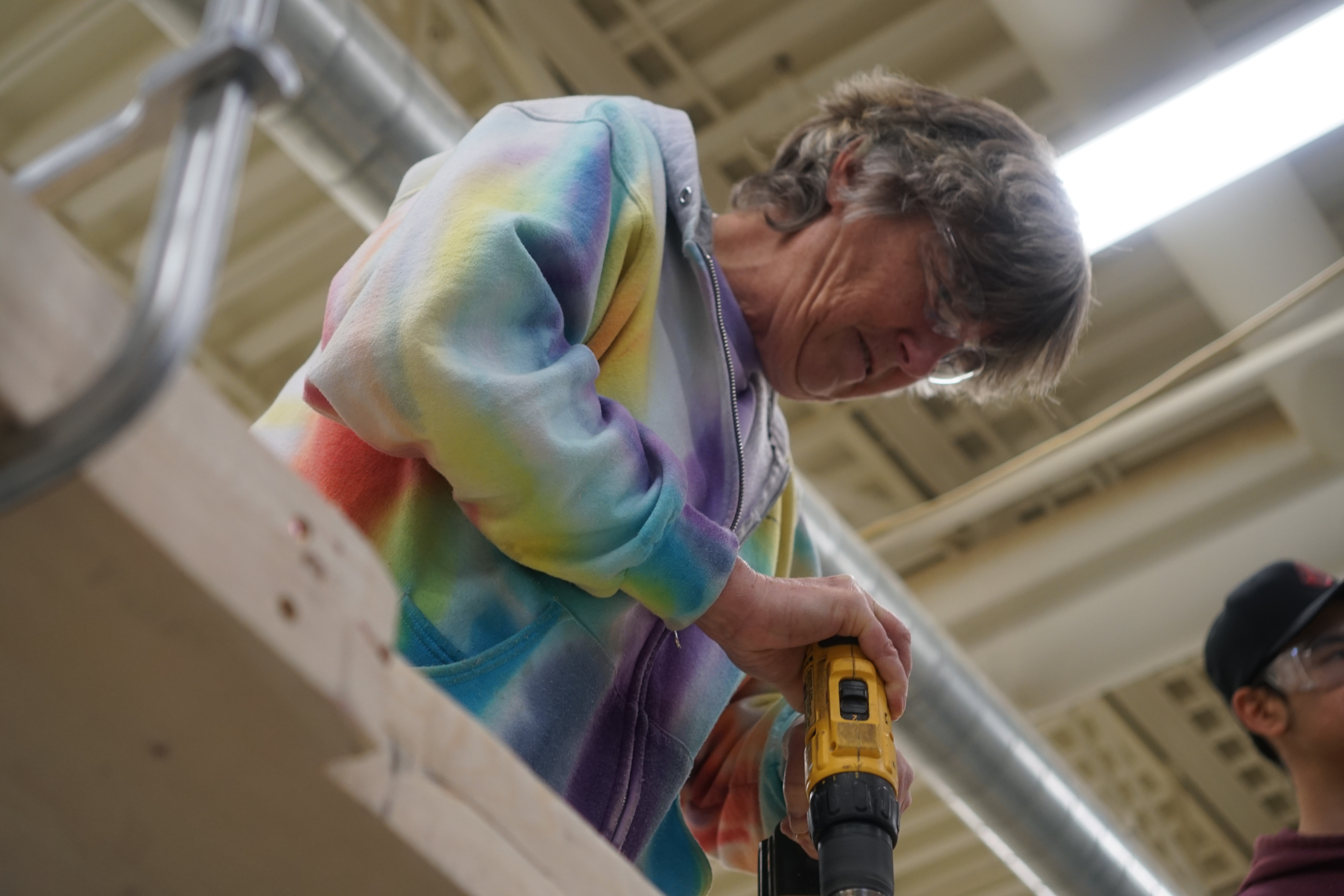Workshop Coral Harbour
2-Day Workshop Coral Harbour
Due to an explicit absence of our local PI, the focus of our workshop had shifted considerably towards the local high-school. Our project research permit, however, did not cover school activities, and as such this track only presents what we did, not how our activities in the high-school would contribute to the knowledge conciliation in terms of ethical space of engagement. Neither did we have the input from a community advisory board like we had had in Gjoa Haven, to design the workshop sessions in a way that could be analysed or evaluated in terms of how the community would prefer to meet in a "good way".
Stay with the trouble: Politics of In-action and Refusal
Day 1: Building Qamutiq (Morning)
The final workshops were always supposed to include several sessions related to ethical knowledge conciliation in community-based polar bear research. The qamutik building sessions approaches this topic in a way that moves beyond the more common data-driven approach that is often applied in monitoring research. It also moves away from considering knowledge conciliation as a “problem” of integration or co-production of knowledge that can be solved by applying the right interface between two differentiated knowledge systems. Through the proposed workshop activities, the potentials of knowledge conciliation through day-to-day practices like navigating the land, or collecting ice for example were to be explored. To this end the workshop contained a session in which we would engage further to define ‘Aesthetic Action”.
The physical exercise of researchers building the qamutik together with pupils from the school, and a workshop teacher allowed for a completely different approach to knowledge conciliation. First of all, the decision to build a qamutiq was based on an expressed need by the school work-shop. This need emerged as part of negotiating terms for this particular session with the School Principal, Cirnac Project Lead Leonard Netser, and several teachers of the school. After that, the materials needed to be prepared, as for there to be enough time to finish the qamutik together. These processes require immersion in the community. Most importantly however, there is a degree of intra-dependency that is required to collaborate on this project. The afternoon of building together was not just meant as a pedagogical event on IQ, it provided a moment for Southern researchers to be present, receptive, attentive and engaged- all qualities that seem straight-forward, but are not a given in the realities of Arctic fieldwork, while being a crucial element to ethical engagement in research. Reserving space to devote an afternoon on such dynamics and taking the time to reflect on them, provides practical entrance points for understanding Inuit Knowledge (or IQ) to not only be considered as deeply entangled with on-the-land practices and skills, but also are part of practices and traditions that emerge from intra-relational dependencies. Similar activities in Gjoa Haven have provided for deeper relationship building and new opportunities to consider IQ in ways that are less extractive, and more engaged within the process of doing research.
Highschool students and researchers from the south participated together in building a Qamutik under guidance of Ross Eetuk, the school workshop teacher. The purpose of the event was to give stunts the experience of building a Qamutik, to encourage knowledge transfer across cultures, and provide an opportunity to connect and create together.


Science presentations (Evening)
During the main gathering in Coral Harbour, BearWatch researchers from the South, both in person and virtually, gave a series of presentations outlining new, non-invasive tools and a new way to determine the cost effectiveness of the collection of various types of polar bear data. These presentations were followed with a summary of all the non-invasive work that was carried out and led by community hunters and PI Leonard Netser on Southampton Island with CIRNAC support over the last four years. This included scat collection, bear den location and excavation, and optimization efforts for the collection of snow from polar bear tracks for genetic analysis.
The final activity of the gathering was a workshop-like activity seeking insights from local hunters and community members on how to ‘live with bears’ (versus the current management via quota system).
Day 2: School Bingo, Lunch, Presentation
The presentations at the High school were informal presentation made by Lougheed, Van Coeverden de Groot, DeWildt and Brannigan on non-invasive polar bear assays, Coral Harbour polar bear field work, grizzlies and polar bear hybridization and a polar bear bingo was completed with the high School Science seniors.
